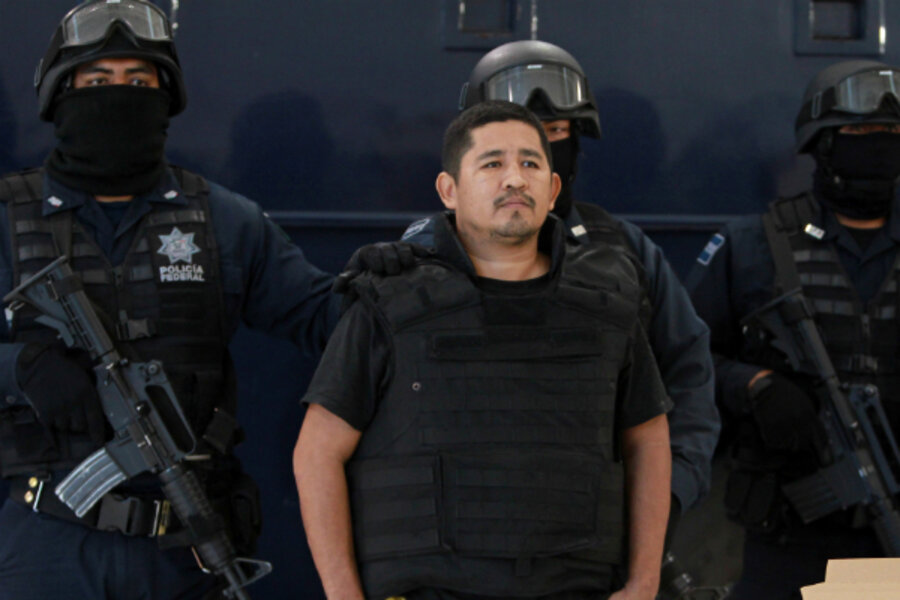Forget cliff diving, Acapulco now known as hot spot in Mexico's drug war
Loading...
While many of Mexico’s tourist areas have remained separate from the bouts of drug violence buffeting the country, the popular resort city of Acapulco has emerged as one of the new hot spots of organized crime.
A bloody week in which more than two dozen people were killed, and five decapitated bodies were found around the city, is the latest marker of Acapulco’s decline.
As Excelsior reports, many of those murdered in the resort were taxi drivers, who often work as lookouts for one drug gang or another. On the year, 42 cab drivers have been murdered in the city, according to figures from the newspaper Reforma.
The recent wave of violence has led to a broader spike in crimes against the population in this port city, including people unconnected to organized crime.
Twenty-three local gasoline stations shut their doors for three hours on Friday to protest against increased extortion demands, while authorities reported a 20-fold rise in car robberies along the famed Autopista del Sol, or Highway of the Sun, which connects Acapulco to Mexico City. After a series of robberies on shops last week, a handful of jewelers in the city’s downtown announced a weekend shutdown to take a stand against the violence.
As of early August, 650 people had been killed in Acapulco in 2011, making it perhaps the bloodiest big city in Mexico after Juarez.
Acapulco’s body count has been strikingly high for a number of years.
As a key entryway for South American cocaine, the city has long been an attractive piece of real estate for drug gangs, with agents of the Sinaloa Cartel battling the Zetas as far back as 2005. But breakdowns in the coherence of the hegemonic networks in Mexico have transformed Acapulco from the site of a battle between two competing gangs to an anarchic mess of newer groups.
Much of the recent surge in violence stems from battles between the Independent Cartel of Acapulco (known as CIDA for its initials in Spanish), which is made up of the remains of the network run by Edgar Valdez Villarreal until his arrest in September 2010, and the South Pacific Cartel, a newly emerging gang that is loosely affiliated with the Beltran Leyvas.
Other smaller gangs such as the Barredora, which saw 10 members arrested for a litany of crimes earlier this month, are also carving out a toehold. The increase in petty crimes like armed robbery and car theft also suggests a rise in smaller groups capitalizing on the climate of insecurity, though they are less active in the international cocaine trade.
At the same time, larger groups like the Zetas, the Sinaloa Cartel, and the Familia Michoacana continue to compete for space in this city of some 700,000 residents.
Authorities say that the recent rash of murders in Acapulco stems from the arrest of CIDA boss Moises Montero Alvarez, alias "El Coreano" earlier this month, as others in the region fight over the scraps of his network.
While violence in Mexico has by and large sidestepped the nation’s vital tourism industry, the killings in Acapulco have been enough to drive down the number of foreign visitors, according to some local proprietors.
Mexican tourists still flock to Acapulco, though not without at least some danger: almost two dozen residents of nearby Michoacan were abducted and killed late last year, after being mistaken for members of the Familia.
Local officials have struggled to find an answer to the insecurity. Manuel Añorve Baños, the mayor of Acapulco, has been requesting federal security reinforcements for months, as local police have proven unable to tamp down on the violence hitting the city.
Of course, there already is a substantial federal presence in and around Acapulco, and it has done little to rein in the violence.
Other officials have suggested different tactics: the attorney general in Acapulco’s home state of Guerrero, Alberto Lopez Rosas, provoked controversy earlier this week when he called for a pact among the competing groups to reduce the violence.
Lopez Rosas was subsequently obliged to clarify that he was not proposing that the government strike a truce with criminal groups, but only that the gangs follow certain rules of behavior among themselves.
--- Patrick Corcoran is a writer for Insight – Organized Crime in the Americas, which provides research, analysis, and investigation of the criminal world throughout the region. Find all of his research here.
[Editor's note: The original version misstated the amount of murders in Acapulco.]





